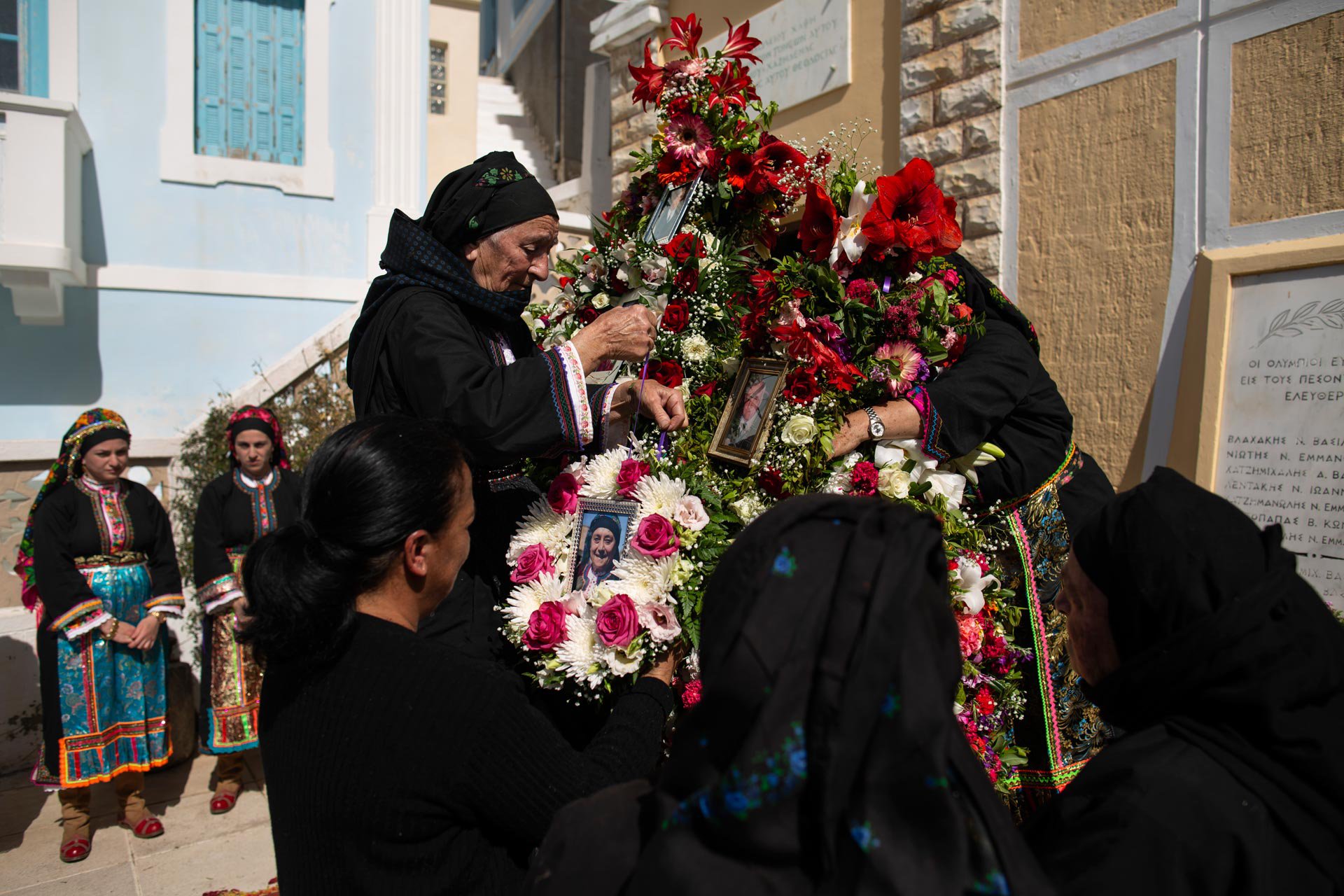
Greek Orthodox Easter week is a significant and solemn occasion marked throughout the country, but in Olympos the grief is deeper, more personal. Olympians mourn not just the death of Jesus Christ, but also their own dead, those villagers who passed away that year. During the holy days, the weight of their loss is heavier, discernible in the crack of their voices as they sing a lament, tears running down their faces. The custom of lamenting the departed is one of several Easter week traditions unique to Olympos.

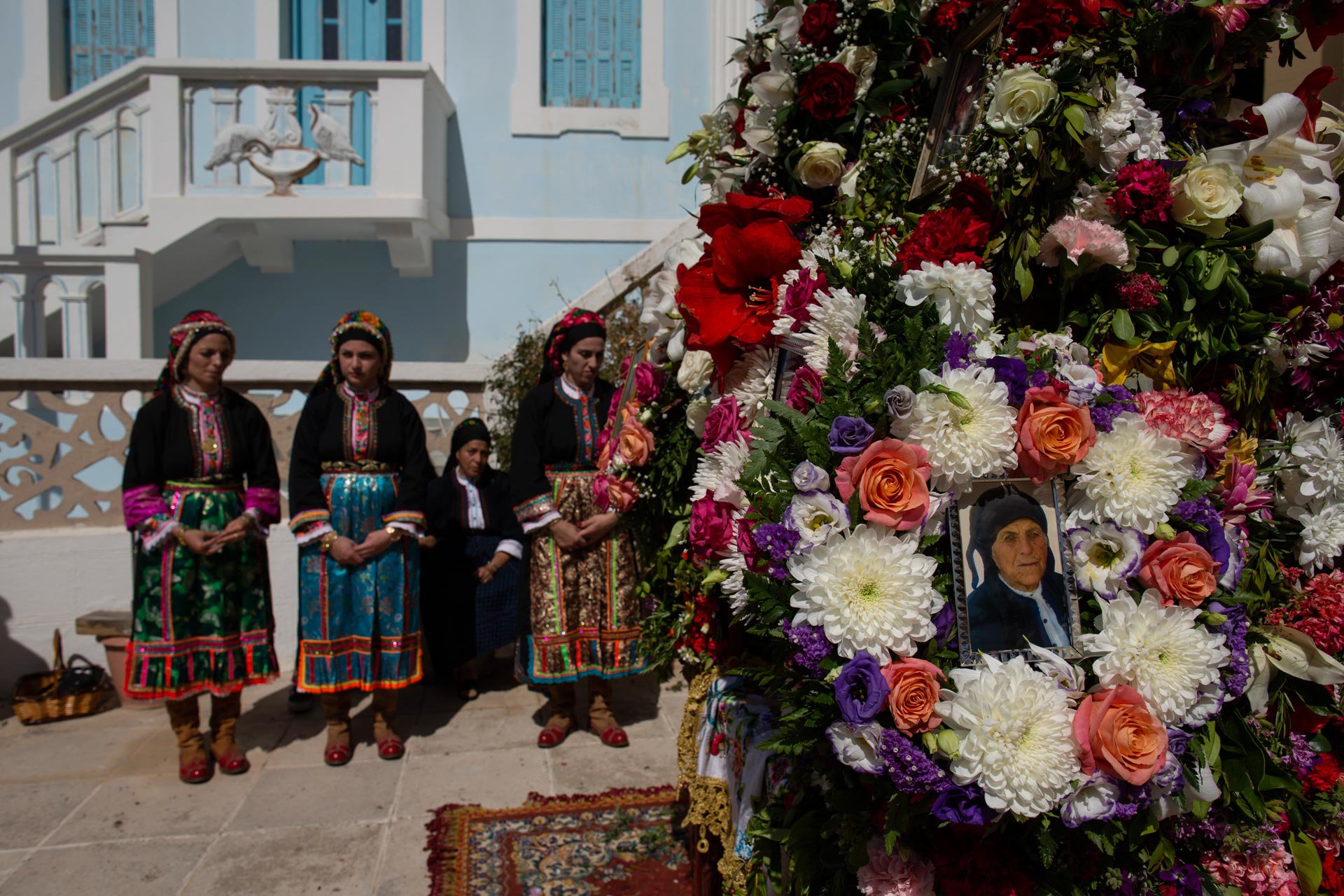

Dressed in their Sunday best – black ‘kavai’ and matching headscarf for matrons, gawdy colors and gold jewelry for unmarried girls – the village women slowly make their way to the church in the morning. In their arms they carry baskets filled with freshly-picked flowers to decorate the wooden bier placed in the church’s courtyard. In Orthodox tradition, the bier symbolizes the tomb of Christ. In Olympos, it also serves as a memorial to their deceased fellow villagers. Alongside the flowers that soon blanket the bier, women who have lost a loved one carefully pin a photograph of their departed next to a handwritten poem – called a ‘miroloyi,’ or lament - they have composed for the deceased.
When the bier is completely covered by wreaths with photographs, and laments, it is brought inside, and morning mass is sung. When mass is over, it is time for the most intense part of the ritual to begin. The church bells toll mournfully as the lament starts. Slowly at first, the women soon bring themselves to a frenzy, sobbing and singing so desperately that the rest of the village simply stands around the church with their head bowed, listening. In this way, Olympos honors its dead every year.
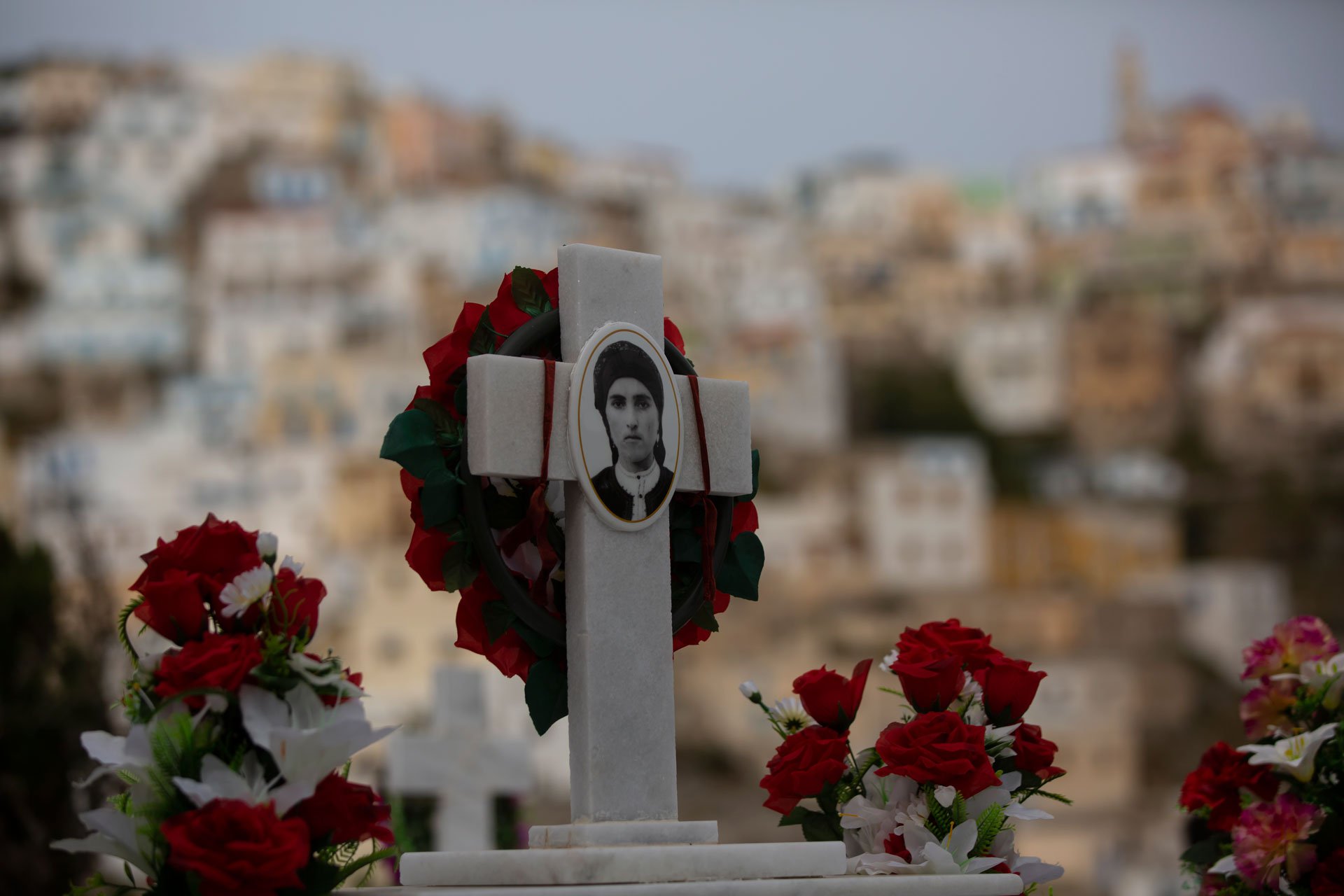
Every year at 9am sharp, Irini, the reverend’s wife joins her husband to ring the church bell on Bright Tuesday, one of Olympos’ most iconic traditions. The largest icons of the church, freshly be-ribboned by Father Yiannis, await the village’s menfolk to hoist them on their backs and take them on a ritual procession throughout the village, stopping at the cemetery and each and every chapel in the village.
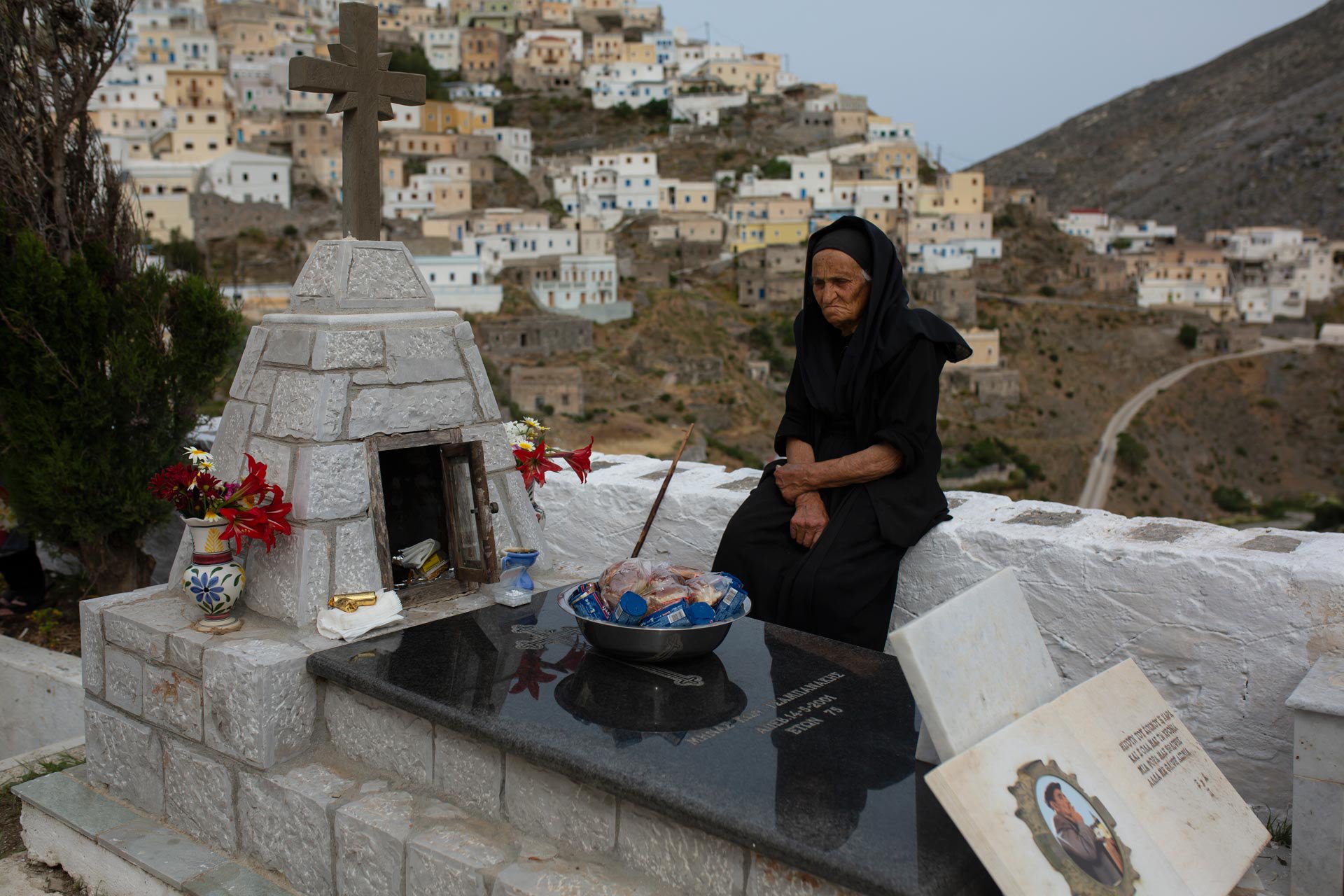
At the cemetery, villagers dressed in mourning await the procession. They stand by their family tombs they have polished and cleaned for the occasion, new candles lit. The icons – and menfolk carrying them - rest while the priest visits and blesses each grave.
“Christ is risen,” says Father Yiannis over each tomb, and the relatives are satisfied that their ancestors have been honored.
After each blessing, the mood lightens as families offer sweets, cheese pies and juices to the others.
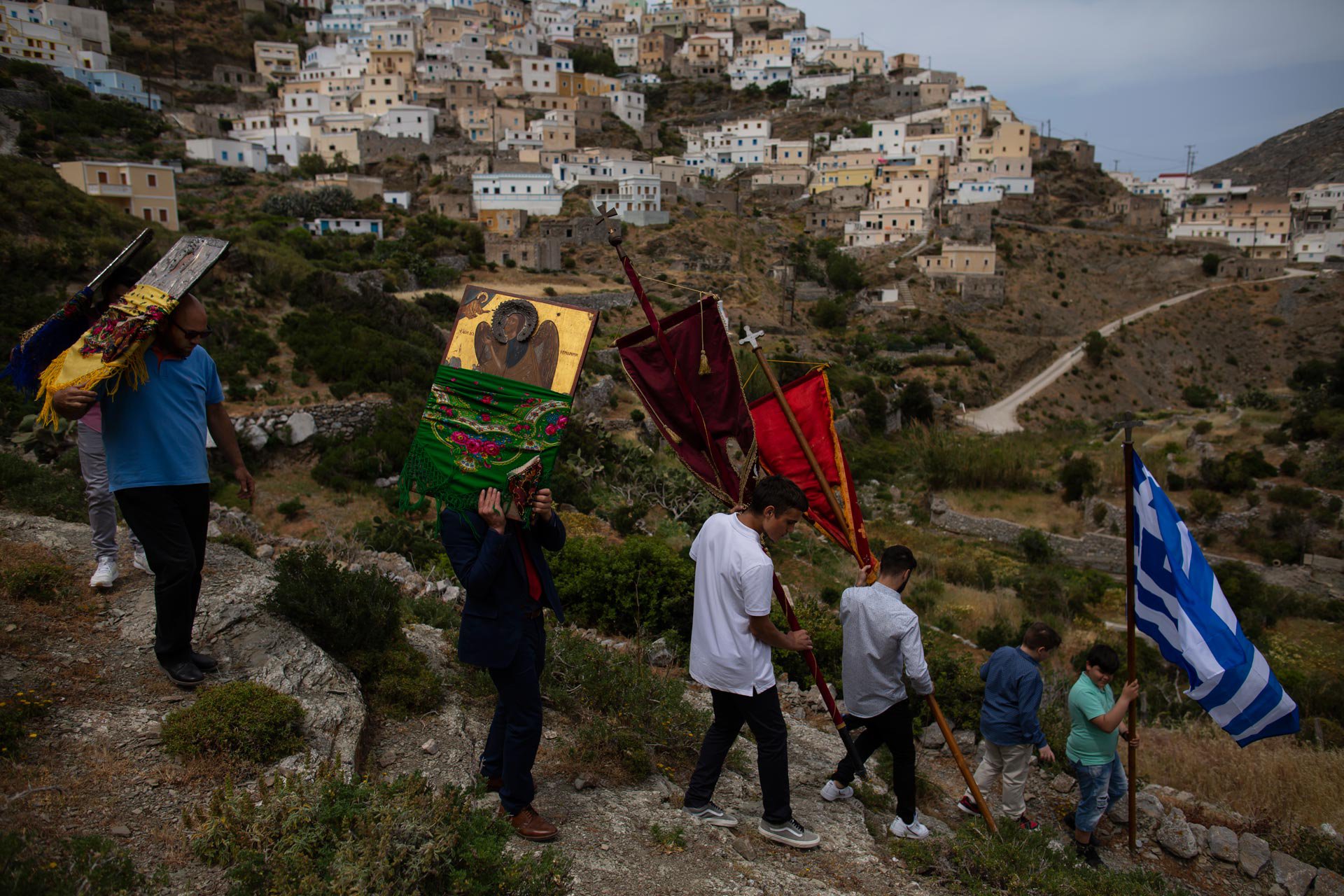
Walking uphill, downhill, but never in a straight line, the geography of Olympos makes the procession of the icons particularly challenging. The menfolk carry the big icons, while the boys carry Byzantine and Greek flags. Young girls in their colorful attire follow. At each chapel on the route, Father Yiannis kneels and prays. “That’s how it was done in the old days,” says Irini. “You asked God for rain, for a good harvest.” In Olympos, they do it still. The procession snakes through a canyon and climbs up to reach the other side of the village, with cries of ‘Christ is risen’ echoing through the hills. For those watching and waiting at the last stop, a chapel high up by the old windmills, the procession is so far as to look like ants, impossibly far below.
DIRECTOR Yannis Kolesidis
PHOTOGRAPHER Yannis Kolesidis
DIRECTOR of PHOTOGRAPHY Yannis Kolesidis, Phoebe Fronista
WRITER Ioanna Kardara
ENGLISH LANGUAGE EDIDOR Phoebe Fronista
VIDEO EDITOR George Kolios, Georgia Bempelou
* All documentary material emerged from trip made in March 2021
